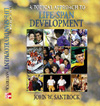 |  Life-Span Development: A Topical Approach John W. Santrock
Social Contexts of Development Marriage, Lifestyles, and Families
Learning Objectives1.Describe the six stages of the family life cycle, from leaving home and becoming a single adult to the family in later life. |
 |  |  | 2.Discuss the various aspects of marriage, including:- Americans' strong motivation for marriage, but the problems caused by unrealistic expectations and myths
- Gottman's research on the principles that characterize successful marriages, particularly the couple's friendship
- the benefits of a good marriage, such as better physical and mental health and a longer life
- that most middle-aged married adults are satisfied with their marriages
- the final stage in the marital process, from retirement until death
|
 |  |  | 3.Explore the diversity of adult lifestyles, such as:- the myths and stereotypes as well as advantages and disadvantages of being single
- the myth that cohabitation leads to marital happiness
- problems that occur after divorce, such as disequilibrium in the first year, and increased physical and mental health problems
- the complexities of and difficult adjustment to stepfamilies
- similarities between homosexual and heterosexual couples, noting that children of gay and lesbian parents are as well adjusted as those of heterosexual couples
|
 |  |  | 4.Understand the current research on parenting children, including:- the disparity in parenting roles from well planned and coordinated to surprised and chaotic
- Baumrind's four parenting styles-authoritarian, authoritative, neglectful, and indulgent-and how authoritative parenting is most often related to children's social competence
- the effects of child maltreatment, which places the child at high risk for other problems
- contemporary research that documents the role of parenting in children's development, noting that good parenting takes extensive time and effort
|
 |  |  | 5.Consider aspects of parent-adolescents relationships, seeing that while conflict with parents may icnrease in adolescence, it is usually moderate, not severe, and while adolescents seek to be independent, secure attachment to parents is positive for development. |
 |  |  | 6.Describe grandparenting and intergenerational relationships, noting:- the satisfaction that most grandparents experience in that role, but that the grandparenting role can have different meanings
- with continuing contact across generations in families, mothers and daughters have the closest relationship, and the middle-age generation-often called the "sandwich generation" -plays an important role in linking generations
|
 |  |  | 7.Explain sibling relationships, both positive and negative, and the research examining how birth order is related to certain child characteristics, but by itself is not a good predictor of behavior. |
 |  |  | 8.Investigate the changing family, particularly with respect to:- the lack of evidence to suggest that when both parents work full time outside the home there is a negative effect on the child's development
- the effects of divorce on children's adjustment, including the questions of whether parents should stay together for the sake of the children, and how family processes and socioeconomic status are important in divorced children's development.
- problems encountered by children in stepparent families, particularly for adolescents whose parents remarry, and the comparisons for restabilization between stepfamilies and divorced families
- authoritative parenting as the most widely used style around the world, although ethnic minority families often have different family characteristics, and noting the differences in parenting techniques between higher-income and lower-income families
|
|



 2002 McGraw-Hill Higher Education
2002 McGraw-Hill Higher Education